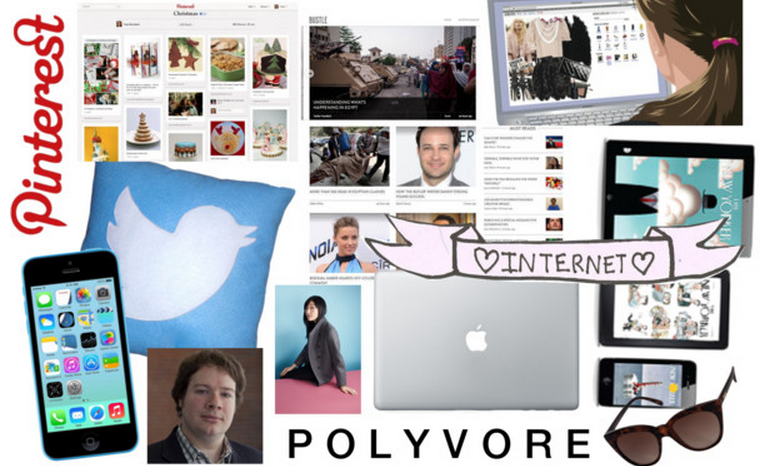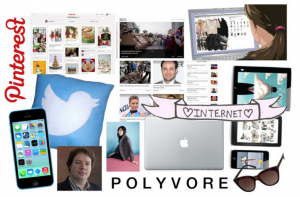Twitter, my preferred source for weird Pokémon quotes, Marxist sex tips, and pictures of baby animals, made headlines last week for announcing its plans to go public — and unveiling an all-male board.
Leadership at Twitter didn’t seem to take the many criticisms of their demographics very seriously, which is unsurprising, given the well-established bro culture of Silicon Valley. CEO Dick Costolo cited a “supply-side” problem in finding highly qualified women to take Twitter’s top positions, prompting New York Times blogger Claire Cain Miller to provide him with a list of 25.
While it’s true that only 18% of computer science graduates in 2009 were women, an overwhelming number of men in Twitter’s leadership have backgrounds in the humanities anyway, so the supply-side argument doesn’t exactly hold water. The general consensus seems to be: Try harder. Do better.
But Twitter is only under scrutiny because of their high profile; this phenomenon isn’t unique. Twitter’s user base is basically representative of the general population, but what about tech startups that cater to women directly? Do their boards and employment practices provide a general sense of equity?
Founded by: 3 men
Current CEO: Co-founder Ben Silbermann
% Female users: 69%
% Female employees: 35%
I am an avid Pinterest user, and I was surprised to discover recently that the CEO was a guy named Ben. Who the hell is Ben, I wondered, and why does he think he has any right to be the CEO of Pinterest?

As it turns out, Silbermann had no intention of starting a female-centric web platform. He partnered up first with Paul Sciarra, an old college buddy, and then with Evan Sharp, a designer whom he happened to meet through a mutual friend. The three of them built a platform for image collection and curation. Sharp told Mashable that Pinterest’s popularity with “the ladies” was an unintended side-effect of developing a visual medium. It’s also been a key to Pinterest’s success.
But where are the female employees? At this point, Pinterest has a staff of almost 200, so the fact that not even sixty are women is fairly absurd. More striking is the fact that on the Pinterest “Team” page, at the end of all of the portraits of current employees, there’s a picture of an anonymous white guy, captioned “You!” Clicking it brings you to the careers page. (I wonder who they’re looking to hire?)
Bustle
Founded by: 1 man
Current CEO: Founder Bryan Goldberg
Current editors: 4 women
% Female users: not available
Consider Bustle an example of what not to do. Its founder, Bryan Goldberg, is known for founding The Bleacher Report, a largely user-generated sports news site that sold for $200,000,000 in 2012. After learning that advertisers were more keen to reach a wide female audience, he set out to start a site for women: Bustle.
There are a lot of reasons this contributes to the Silicon bro culture. For one thing, Goldberg seems bewildered by women altogether, so it’s fairly presumptuous to assume that he’s the guy for the job. (In a recent New Yorker profile, he reveals being totally astonished that a writer remembered what she had been wearing three days prior.)
Secondly, he vastly overestimates his status as an innovator, as far as women’s media goes. In a Pandodaily blog post announcing the $6.5 million he had raised for Bustle, he asks, “Isn’t it time for a women’s publication that puts world news and politics alongside beauty tips?” Problem is, publications like Jezebel, xoJane, The Hairpin, and Refinery 29 already cover eyeliner trends alongside updates from the Middle East. (He has since apologized).
Don’t get me wrong; I actually really enjoy Bustle. Its content is topical, fun, smart, and sometimes delightfully weird. But Goldberg’s arrogance makes me want to hate it just to spite him.
Polyvore
Founded by: 3 men
Current CEO: Jess Lee, hardcore user turned full time employee
% Female users: 73%
% Female employees: 58%
Polyvore is yet another site for women that was founded by men. But Polyvore’s founders, three software engineers who met while walking at Yahoo, saw the value in the women interested in their product almost immediately. Of its three CEOs so far, two have been women, and both of them started at the very bottom: as users.
Jess Lee, the current CEO, began as a “hardcore user” who sent the founders a two-page email listing Polyvore’s flaws a few months after launch. She was hired within the year. Before Sukhinder Singh Cassidy was named Polyvore’s second CEO, she was president of Google’s Asia-Pacific and Latin-American operations, but she was known to Polyvore users as Sukkie2008.
The rest of the company reflects its user base as well. Although the 58% female team doesn’t quite mirror Polyvore’s 73% female user base, it certainly stands out among web startups. And the choice makes sense: The women who use Polyvore are most likely to become enthusiastic, insightful employees.
What to do?
If women are using your product, hire women. Not because it’s embarrassing not to (although Twitter really should be ashamed of its homogenous board make-up), but because a completely male-dominated corporate culture isn’t going to be as responsive to female users’ needs. And that’s bad business.
If Pinterest really has 70 million active users, at least a few of the 50 million women (more or less) on the site must have computer science skills. The problem isn’t on the supply side. There are women who are looking for (and qualified for) these jobs. Reach out to them, and they’re likely to respond.
Plus, if you hire the people who live and breathe your product, you’ll end up with a team that understands your customers, users, and readers better than anybody. Polyvore has turned superusers into employees and even CEOs, and in doing so it has found leaders who truly understood the community, the product, and its potential.
Goldberg’s best Bustle decision yet has been gathering writers and editors from his target demographic: women between 18 and 34. At this point, step back and let those women take the reins. Promote them. And if Bustle ever goes public, for the love of god, put them on the board.


In an earlier piece, you talked about how inequities in the workforce are being addressed in business school, and you profiled Harvard Business School and the effectiveness of their approach. To what extent does this problem exist in the CS Department, even here at Brown? That would be a *great* investigative piece. How many female CS concentrators are there? Professors?